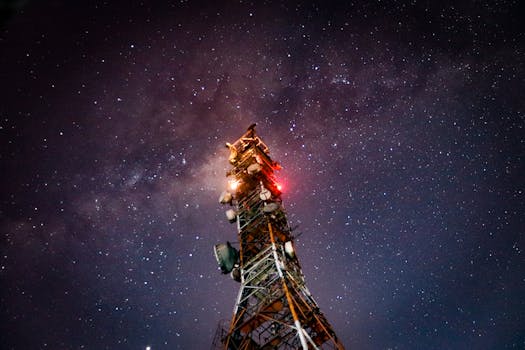
Starlink: Revolutionizing Global Internet Connectivity with Satellite Technology
Starlink is a satellite constellation developed by SpaceX, aiming to provide high-speed, low-latency internet connectivity worldwide, bridging the digital divide and transforming the way we communicate. With its innovative approach to satellite technology, Starlink is poised to revolutionize the way we access the internet, making it faster, more reliable, and accessible to everyone, regardless of their geographical location.
Introduction to Starlink
Launched in 2019, Starlink is a constellation of low-Earth orbit (LEO) satellites designed to provide internet connectivity to remote and underserved areas, where traditional fiber-optic cables and cellular networks are often unavailable or unreliable. The constellation consists of thousands of small satellites, each weighing around 400 pounds, which are launched into space using SpaceX’s Falcon 9 rocket. Once in orbit, these satellites form a mesh network, allowing them to communicate with each other and with ground stations, providing a robust and resilient internet connection.
How Starlink Works
Starlink uses a combination of advanced technologies, including phased array antennas, Hall effect thrusters, and Ka- and Ku-band frequencies, to provide high-speed internet connectivity. The satellites are equipped with advanced navigation and control systems, allowing them to maintain precise orbits and communicate with each other and with ground stations. The network uses a mesh topology, where each satellite acts as a node, relaying data to and from other satellites and ground stations, ensuring that data is transmitted quickly and efficiently.
The Starlink system consists of three main components: the satellites, the ground stations, and the user terminals. The satellites are the backbone of the network, providing the internet connectivity and transmitting data to and from the ground stations. The ground stations, located around the world, communicate with the satellites and route internet traffic to and from the user terminals. The user terminals, which can be installed at homes, schools, or businesses, use a small dish antenna to communicate with the satellites and access the internet.
Benefits and Applications of Starlink
Starlink has the potential to transform the way we communicate and access information, providing numerous benefits and applications, including:
Global connectivity: Starlink can provide internet connectivity to remote and underserved areas, bridging the digital divide and enabling people to access information, education, and economic opportunities.
Disaster relief: Starlink can provide critical communication services during natural disasters, such as hurricanes, earthquakes, and wildfires, when traditional communication networks are often disrupted.
Rural broadband: Starlink can provide high-speed internet connectivity to rural areas, enabling people to access online services, such as telemedicine, online education, and e-commerce.
Maritime and aviation: Starlink can provide internet connectivity to ships and aircraft, enabling real-time communication and navigation.
Challenges and Future Developments
While Starlink has the potential to revolutionize global internet connectivity, there are several challenges and limitations that need to be addressed, including:
Regulatory hurdles: Starlink needs to comply with regulatory requirements and obtain necessary licenses and permits to operate in different countries and regions.
Interference and congestion: The increasing number of satellites in orbit can cause interference and congestion, affecting the performance and reliability of the network.
Cost and affordability: The cost of launching and maintaining a constellation of thousands of satellites is high, and the cost of accessing the internet via Starlink may be out of reach for many people, particularly in developing countries.
Space debris: The large number of satellites in orbit can contribute to space debris, posing a risk to other satellites and spacecraft.
Despite these challenges, SpaceX is continuing to develop and improve the Starlink network, with plans to launch thousands of additional satellites in the coming years. The company is also working to reduce the cost of accessing the internet via Starlink, making it more affordable and accessible to people around the world.
